This is because across the country average annual rainfall varies between 600mm on the east and 3000mm on the west. However, despite the rainy heritage, it seems as if the UK is experiencing a shift in its weather patterns with more sunny days across the country.
Let’s look at what this means for British homes, and how you can make the most of sunnier days with Roof Maker’s rooflights and lanterns.
Is the UK becoming sunnier?
The MET has collected sunlight data going back to the early 1900s. This data is vital for judging long-term changes to an environment that often works in very slight, slow increments. In it, we can see that for both the North and South of England, there is a slight increase in overall sunlight, with a few decades seeing dips.
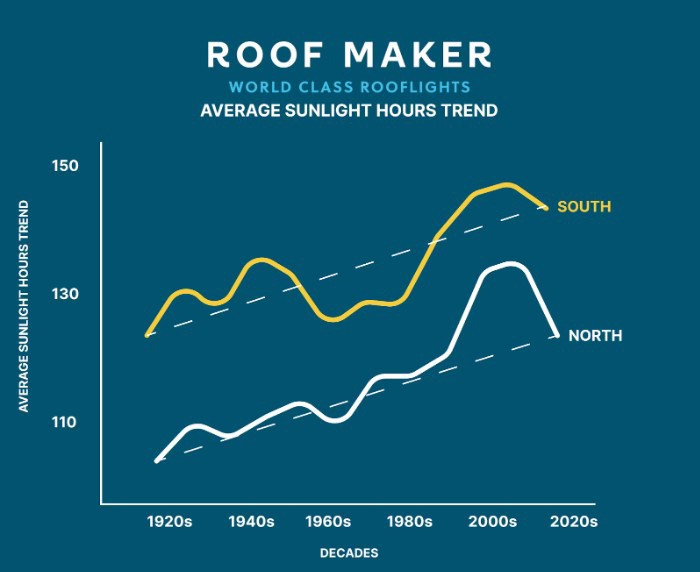
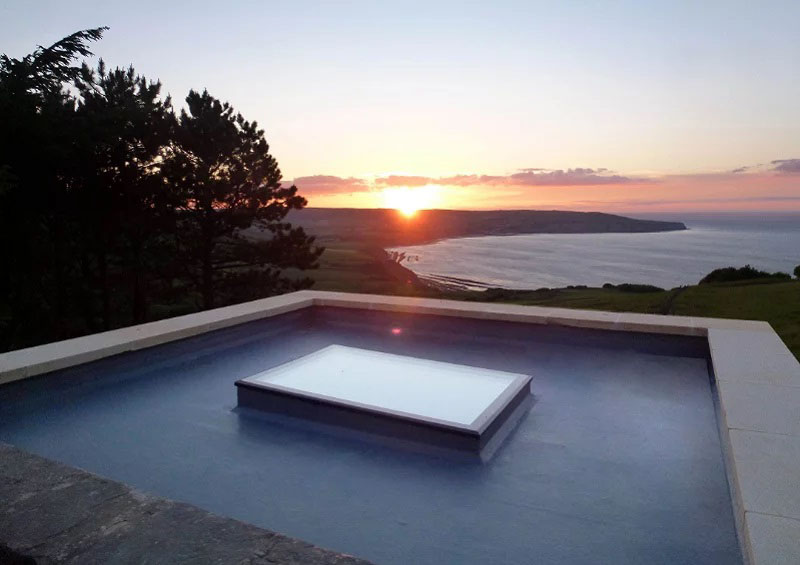
This can be seen in the above chart where average annual sunlight hours have been on the rise since the 1960s. It’s also interesting to see how the South and North continue to have different levels of sunshine in the UK with England South benefitting from more favourable weather and thus a higher trend (as seen with the dotted line).
This is unsurprising given that higher rainfall tends to fall in the north and the western seaboard. In fact, with the data we found, sunlight hours reached approximately 1,563 in the 2010s with the 2020s showing a trend to beating this record.
It’s also worth mentioning that we are only part of the way through the 2020s so the trend and data for the 2020s are currently incomplete. For more information, the BBC has created a very useful tool which tracks by postal code to show how climate change may affect the area where you live.
What is certain is that there has been a gradual increase over time with each region rising:
- England North: Sunlight hours have been increasing at a rate of around 1.12 hours per year.
- England South: Sunlight hours have been increasing at a rate of around 1.16 hours per year.
We can also see a large variance in sunlight hours by season for the North and South. For
England South:
- Spring has approximately 154 hours per month
- Summer has approximately 189 hours per month
- Autumn has approximately 102 hours per month
- Winter has approximately 56 hours per month
For England North:
- Spring has approximately 139 hours per month
- Summer has approximately 164 hours per month
- Autumn has approximately 88 hours per month
- Winter has approximately 48 hours per month
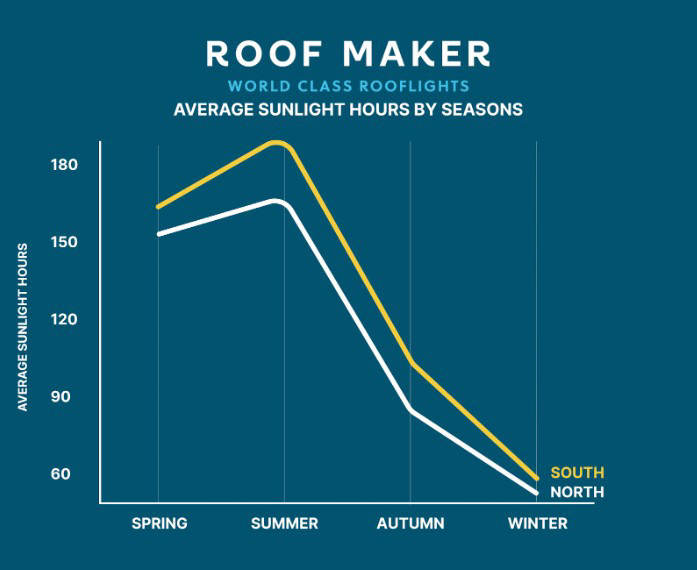
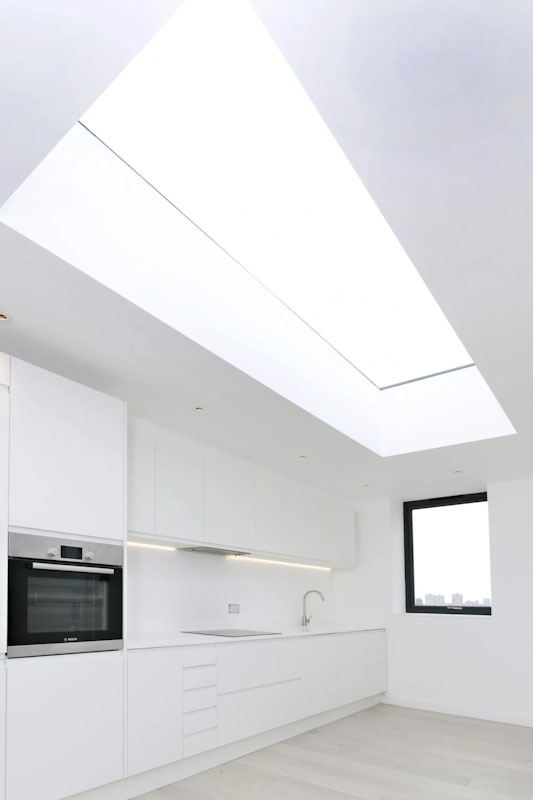
This shows a wide range of natural light reaching homes and speaks to the tiredness many of us feel in the colder months. This is more stark for homes in the North of England but shows that even with the steady increase in hours, seasonal changes can still be quite significant.
What does this mean for UK homeowners?
Firstly, the UK is getting warmer, and British homes need to adapt to be more efficient with ventilation, temperature control, and UV protection.
UV protection
Natural light has many benefits and has been shown to provide several benefits for health and wellbeing including;
- Boosting performance in home offices
- Improving moods to fight SAD
- Boosting vitamin D storage
- Improving sleep cycles
- Supporting eye health
However, exposure to UV rays also comes with the risk of overheating the home or exposing yourself and your furniture to harmful UV rays.
This is where modern glazing, especially the type used in Roof Maker products, as our windows allow you to control all the aspects of your home including the amount of sunlight you let through.
Specify solar control glass and your rooflight will come with a reflective coating which repels heat from the sun, minimising solar gain and keeping your room cooler in summer.
Ventilation
Ventilation and airflow will also become more important as we see sunlight hours increase. Choosing roof lanterns or windows that can open gives you the versatility to allow your home to breathe in summer and keep the heat in during the colder winter months.
Roof lights also work with the natural airflow of a room as their place at the top of your home allows for warm, stale air to rise while cooler air flows into the space. This level of control also has the benefit of helping with any moisture buildup you may find in spaces like internal bathrooms.
Temperature control
Finally, with more sunshine comes the need to control the light you let in. This is where roof light blinds can play an important role by allowing you to let the light in the morning and build up the warmth and light you’d like during the day, and then close them as things get dark or if you feel your home getting too warm. Blinds also help with privacy and light control in bedrooms in particular.
For rooflights that are out of reach such as installations in double-vaulted roofs; you can opt for automated blinds like the SKY-BLIND. These products are hidden and operate on a spool 24V DC motor, meaning they have no visible cords, creating a clean, minimal aesthetic.
The control provided over all of these aspects makes a rooflight a great investment for all seasons. Especially in the UK where sunlight hours can vary greatly from the lows of winter (48-56 hours on average) to the highs of summer (164-189 hours on average).

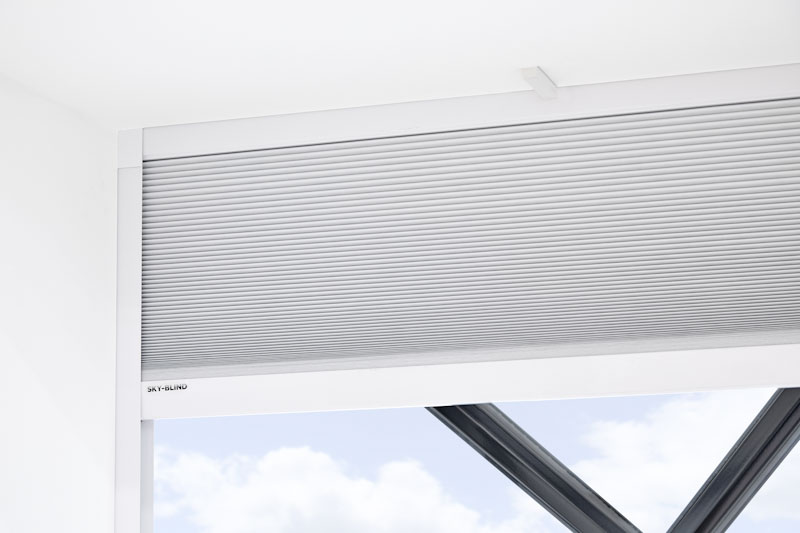
Where will a skylight provide the biggest benefit?
So if you’re set on making the most of the sunlight hours then where should you place a skylight? Larger living spaces are often the first port of call as these are the areas you spend the most time in. Adding a rooflight to a lounge or open-plan kitchen can also add a wow factor that is sure to impress visitors, and potentially add a feature if you ever intend to sell the property.
Next, consider narrow or dark spaces that sometimes feel oppressive. Internal bathrooms and corridors are prime candidates for this as adding rooflights, especially opening rooflights not only adds lightwells but better ventilation too.
Finally, a rooflight can bring a loft space to life. Lofts are often limited on space so introducing uninterrupted views and light can make a space airy and inviting.
UK homes need to change
Whatever your needs, time and the shift in climate show that the UK is gradually receiving more and more annual sunlight. As such, it is important to make your home more sustainable by improving performance and focusing on factors like light, ventilation, and heat.
If you’re interested in finding out more about our skylights or how we can help you adapt your home, contact our team today or take a look at our wide range of products. The Roof Maker team is here to help you improve your home and make the sunny days last that little bit longer.
